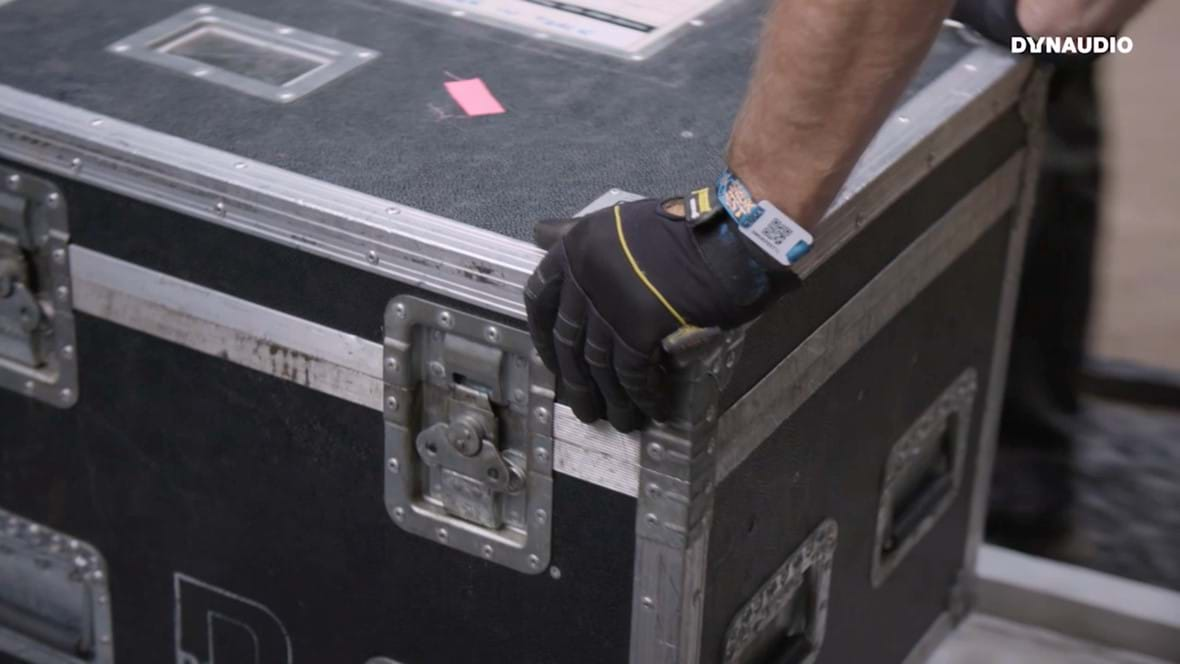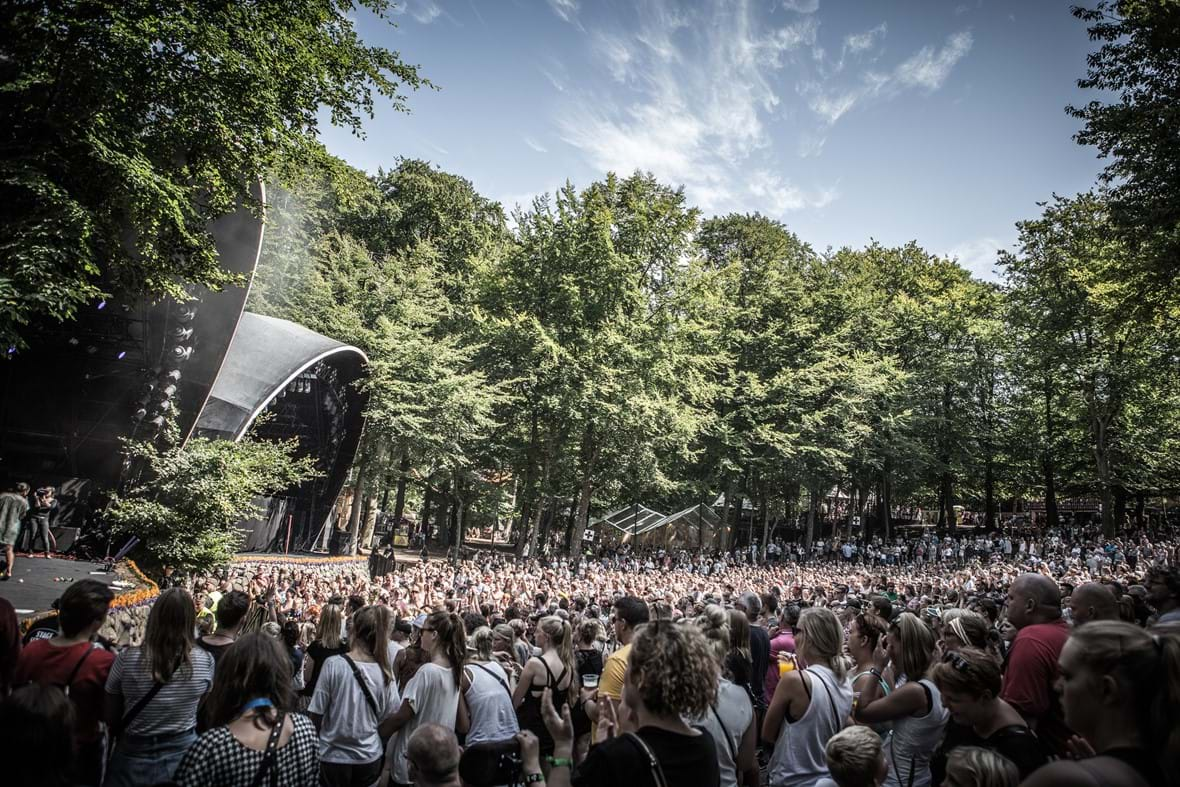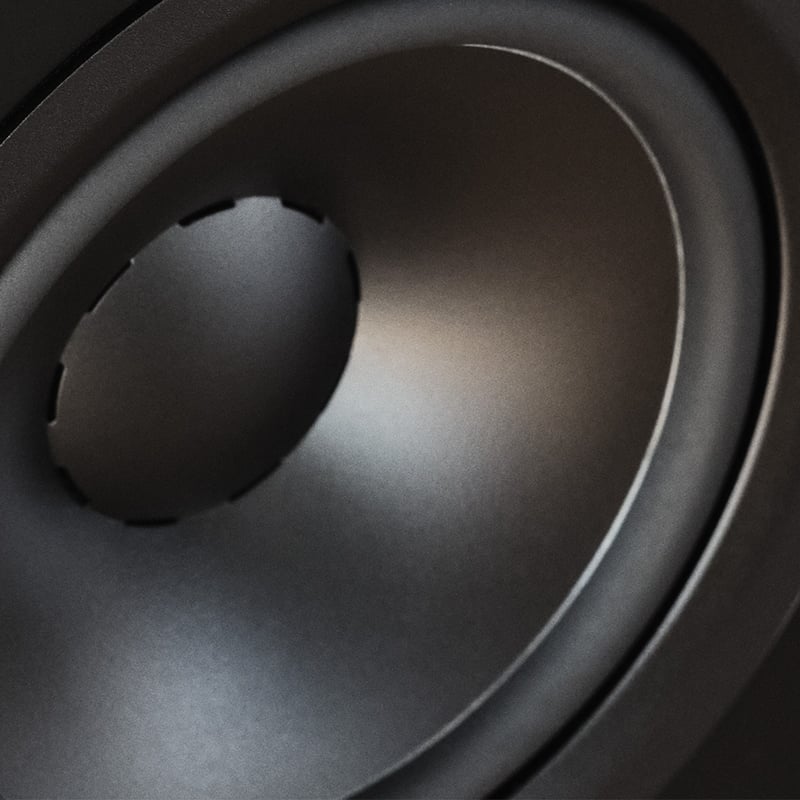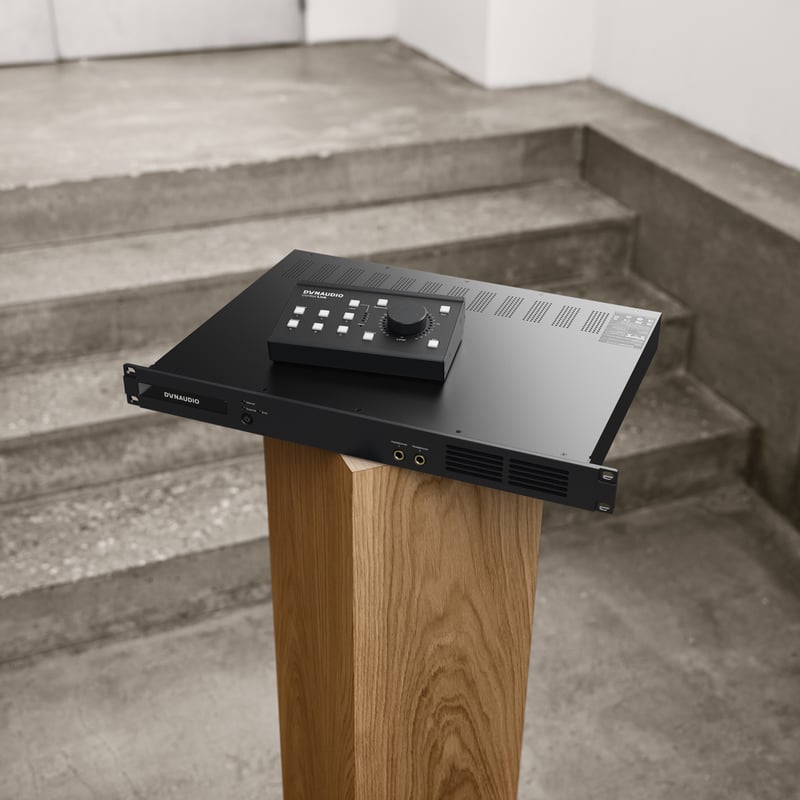This episode's questions
In this Special Edition of Ask the Expert, we talk about how the main stage at Smuk Fest - Skanderborg's local festival - is managed as we address questions like:
- What's the PA system like?
- How to cover the whole audience with sound
- Take up/down time?
- And many, many more...
To answer these questions, we are joined by our very own Michael Munch. One week a year, Michael is one of three Stage Managers at Smuk Fest's biggest stage. In the video below, you can see all of Michael's answers.
Subscribe now: Ask The Expert on YouTube
Questions and answers
What's Smuk Fest?
Each August, Skanderborg is turned from a quiet, sleepy town into a Mecca of music, because of the local festival, but what is Smuk Fest really?
How many watts does the main stage have?
A question Michael has had over and over again. But, that doesn't deter us from asking it ... and let us tell you, it's a lot!
Could you use Dynaudio speakers for a festival?
Yeah, what if we put... like... 10 LYD 8s together?
What's the PA system like?
What does it look like and is it different from other festivals' PA systems?
Do the musicians and the audience get the same mix?
We are all listening to the same thing or is there really a difference in mixes?
How do you cover the whole audience with quality sound?
Have you ever wondered how you get quality sound (or at least decent) to the whole festival area? You're not alone.
How long does it take to set up and take down the whole production?
For our final question, we need to find out how long it takes to set the whole thing up and pull it apart.
Thank you!
We want to give a big thanks to all of those who posted questions. Unfortunately, we can only steal our experts away for a limited time, so we didn't have the chance to answer each one of the great questions we received. As we did last time, we'll make sure keep an eye out for any interesting questions to bring to the next episode of Ask The Expert.
Subscribe now: Ask The Expert on YouTube
If you have any more questions, please share them with us - and the rest of our community - on our Facebook page or directly in the comment section on YouTube.
All the best,
Michael and Christopher

Transcript
Christopher Kjærulff: Welcome to Ask the Expert. As you can probably see we have moved out from our usual setting in our factory in Skanderborg. And there is a lot going on today with big machinery doing a lot of preparations. With me, I have Michael. And Michael can you tell us a little bit about what you do in Dynaudio?
Michael Munch: Yes I work for Dynaudio. And I have been working for Dynaudio for almost a year now.
I work with product management for all the install products that Dynaudio is doing.
Christopher: Yeah and is there any exciting projects coming up there?
Michael: Yeah... It is a quite new area for Dynaudio and we are actually working on a brand new product line coming later this year.
A lot of new exciting projects are coming out.
Christopher: But as people have already figured out. There is a reason why we moved out today. That's because you have pretty cool side gig.
Michael: Yes... I work at this festival as a stage manager.
And as you can see the stage in the background that’s my responsibility area.
Christopher: And Skanderborg festival is called Smukfest right? And it is to my understanding one of the biggest festivals in Denmark
Michael: It is yes. It is the second largest festival in Denmark. And it has been going on for more than 30 years – 35 I say.
Christopher: And how many people would you say pass through each day? There would be more than…
Michael: It is 5 days festival … Running for 5 days. And there will be more than 40 000 people every day.
Ok.
Coming to this festival.
Christopher: And what are the biggest names are going to perform?
Michael: Yeah it is a big international festival so we will have Rihanna visiting us. We will have Sia and we will have Sting as a three of the main acts… International Main acts this year.
Ok
And top of that there will be a lot of Danish main acts as well. A lot of big names.
Christopher: Sounds like a cool festival.
Michael: It is yeah.
Christopher: Michael can you talk a little bit about how you ended up working as a stage manager here in the Smukfest.
Michael: I have been live engineer for many years. Way back…
I have also been working for rental companies designing audio systems for festivals like this. Then I got connected to this festival. SO actually I have been on this festival for 30 years and I have been doing bands… Deciding the festival and then I am a stage manager on this festival.
Christopher: A little bit about everything.
Yes…
Christopher: And I guess a lot of the experience that you have from a live touring and being a live sound technician. They benefited you quite a lot?
Michael: You know it is all about you know. Because as you can see the stage is here quite small. SO it is a challenge to have those big names we talked about like Rihanna. They have a much bigger stage set up than we can have here. The audio set up and lightning set up. So It takes a lot of experience to have that discussion with the production crew of Rihanna.
Christopher: TO figure out how you fit everything into a considerably smaller stage than they are used to.
Michael: Exactly. They are acting like they got quite shocked sometimes. To see how small the stage really is.
Christopher: And it is… when you compare it to a stadium stages. It is a lot smaller. It is like…
Michael: I would say it is probably between 30% or 40% of what a stadium stage is. Yes.
So it is quite small.
Christopher: So if you have 20 trucks coming here with you, you have to pick a lot of that out.
Michael: You have to cut down the number of trucks yes and cut down the equipment you run here.
Christopher: Ok. Cool. Ok Michael I have to ask you this question and I know you probably get it a lot. But how many Watts do you have here on the biggest stage of Smukfestival.
Michael: I got that question quite often. Well I did talk to the audio guides from the renting company and they have 40 amplifiers here running the main system for the whole stage and every amplifier have 4 channels and every channel has 2.2 kW and that means a lot of Watt.
Christopher: The calculation in my head is difficult but…
Michael: It is more than 350 000 Watt.
Christopher: That is a lot. And with so many watts do you have any kind of restrictions on how loud you can play.
Michael: We do yes. There is a limit also to protect the ears of the audience and so on. But it is 103 dBA weighted in the mixing positon which is 50 meters away from the stage.
Christopher: Ok and if a band were to play to the limit of that… 103 dba right? How would that sound to the audience?
Michael: That would be loud…
Christopher: Loud. Ok. Not something that you want to be in front all the time.
Christopher: Micheal at a festival like this, would it be possible to use any of our speakers?
Michael: Yes and no. I mean a speaker is a speaker. You know… but Dynaudio is developing speakers that are primarily to be used for hi-fi and we put a lot of efforts for having like a true acoustic reference and a true sound in the speakers. Whereas PA speakers like this one here are designed to play extremely loud. If you look at the towers there in the background you can see that one is 20 meters high and there will be speakers from top to bottom. On the very top you put some line array speakers up and on the bottom you put some sub speakers.
Christopher: So I guess that is also about creating a huge sound pressure.
Michael: It is all about the sound pressure and the coverage of the area yes.
Christopher: And it being a festival and people can see that there is a lot going on right now and well we are exposed to the elements such as– I just felt a drop of rain, actually. I guess that they also have to be quite durable.
Michael: Yeah when you design PA speakers for festivals like this they will be exposed to rain they will be exposed to the elements in general. So while hanging there and it starts raining they have to deal with the water. So they have to be designed that way and the cabinets have to be designed so they actually withstand the rain.
Christopher: And when we walk around here I kind of saw that it is a big production and things have to get done quickly sometimes so I guess that they got roughed up quite a bit as well. So it is really about producing some cabinets that are durable.
Michael: The speakers on this festival here come from a rental company. From a Danish rental company but they do international touring so their speakers goes in and out of trucks every day. They go into… They get rigged like you see down here now and they will go up and they will go down. And it is a rough and tough life for a speaker like that - and we are more into creating speakers that look nice and are standing in homes…
Christopher: Exactly… So no Dynaudio speakers here.
Michael: Not Now.
Christopher: Not now.
Christopher: Michael a PA set up for festival like this. How does it look?
Michael: It is quite simple actually. Well you have some microphones and you have some outputs on the stage. All the bands are coming with their instruments and they play a song or two maybe ten… And you put it into the microphones and the drivers and a lot of that music coming from the computers as well. And it goes through what you call a snake, all the way up to the front of house position where you mix it. And they have their own sound engineer and he will start mixing the show and when he has his mix, his final mix he will put reverbs on it, he will put delays or something and he will process the whole signal chain and then when you have a mix you just return it to the stage and it goes to the amplifiers and from the amplifiers to the speakers and out for the audience. That is quite easy.
Christopher: And that is the same thing for every festival or is it a ?
Michael: If you are a little band playing in a club it is the same basically. This is just much more of everything.
Christopher: Ok. That is it?
Christopher: Michael one of the questions that we receive was about when you see the artists on the stage from far away It is sometimes seems like there is a delay in for instance when somebody hit a drum to you to hear the sound. Does that anything to do with how you mix?
Michael: No that is simply laws of physics you know like sound travels with 340 meters per second so if you look at the stage and even a stage with a big display showing what is going on at the stage. Which, by the way, we have here as well. So on those displays you will see like a snare drum. You know you can see the snare drum. He hits the snare drum and then you hear the snare drum a lot later. And that is because if you are hundred meters away, it takes like one third of a second to travel that distance. You will see that it’s not synchronised.
Christopher: So it has nothing to do with how you mix. There aren’t different mixes for audience and the artists.
Michael: No of course the artists cannot play if he has that delay. But he is standing close to where the source is. So the drummer hears the snare drum and the mix that the musician is listening to is called the monitor mix and that is on the stage and there is no delay or latency in that signal.
It is quite different from the mix that we get from. It is a totally different mix than you get. What the audience get is what the sound engineer in the front of house, what he decides that you should hear. What the musician hears is a monitor engineer mixing that sound and that is more sound that the musician can use to play in the best possible way.
Christopher: Ok Michael. One of the questions that we receive quite a lot and also one that I am personally curious about is how do you manage to cover this huge space with quality sound.
Michael: That is a good question and as you can see this festival here is right in the middle of a forest so we have a lot of trees and that is a challenge to cover every area of this area here because you have the trees and you cannot put the high frequency sounds through the trees. So what we actually do is we build the main system next to the stage we have two black towers and you put the left and right system in there and in between the two stages there is another tower where you put in the center system. So this is the main system down there. Then in addition to that you do a distributed delay system and that is done –there is a big one done in that area here because there is a lot of people standing there. And then you put some extra speakers there to cover that area. And then in three or four different trees here we put a set of extra speakers in order to just give the high frequencies areas have a lift here to cover the entire area…
Christopher: And those speakers that you placed in the trees. Is it that just you pick a random tree where you think this would do great or do you plan it before hand?
Michael: No it is actually well planned. It is not this type of plan that you can do back home or in the office but it is this type of planning you do by experience. You know like. And the sound crew that is here has been here for many years and they know- from every year they are a little bit more experienced. They know exactly where to put those delay speakers. So we cover as much as possible.
As much ground
For good quality sound. Yes.
Christopher: And I know that it is trees so they of course grow each year and does that mean that you fine tune each year?
Michael: Yeah you can say that we fine tune the trees. Yeah we are actually allowed to cut a little bit in the trees because of course… because people know that trees are organic material so they will grow every year. And they will make shadows in front of the speakers so we have to cut some of them.
Christopher: So just branches just here and there.
Michael: Yes exactly.
Christopher: And that is how you do?
Michael: Yeah
Christopher: Great. With any festival you have to put things up obviously but how long does it take to put up all of the sound equipment? The audio production goes in two days before the first artist shows up.
Michael: So this festival here is running from Wednesday so that means that the audio production comes in on the Monday. They are actually working right now and then during today, Monday, and tomorrow, Tuesday, they put everything together and fine tune the system and they will be %100 ready when the first band shows up on Wednesday Morning.
Christopher: So that means that there aren’t any… You don’t have to do sound checks with the band or…
Michael: You cannot do that. No, you don’t have a band. But you are absolutely sure that your mixing console is working and all the lines from the stage up to the front of house are working and all the speakers are working and are fine tuned in the best possible way iti s.
Christopher: Ok. And then after putting up the festival starts, everybody plays. And when it is done, how long does it take to pull down?
Michael: Well if it wasn’t because this festival is in a forest, it would only take some hours to take it down. Five or six hours maybe. But since it is quite difficult to do things in this forest here . they take down or break down some stuff on the Sunday after the last band and then they take the rest on the Monday.
Christopher: Ok so it is basically due to the problem with the logistics that it takes longer.
Michael: Exactly. Exactly.
Christopher: Cool. That is it for today. Michael, thank you so much for spending time with us. It has been a pleasure to hear about your work here in Skanderborg festival. To all of you guys, thank you for sending in your great questions. Michael before I let you go, the next couple of days how do they look for you?
Michael: Oh they are extremely busy. We have to be %100 ready for the first act, Wednesday morning. So Monday and Tuesday we will be busy doing all the preparation for that. There is still a lot of things to be done.
Christopher: Yeah
Michael: And we have to be ready.
Christopher: Yeah you have your work cut out.
Michael: Exactly.
Christopher: Good luck and Thanks!
(Image by Smuk fest // Thomas Nørremark)
Sign up to get more great articles
Nothing compares to the satisfaction of knowing – for a fact – that something is as good as it gets





